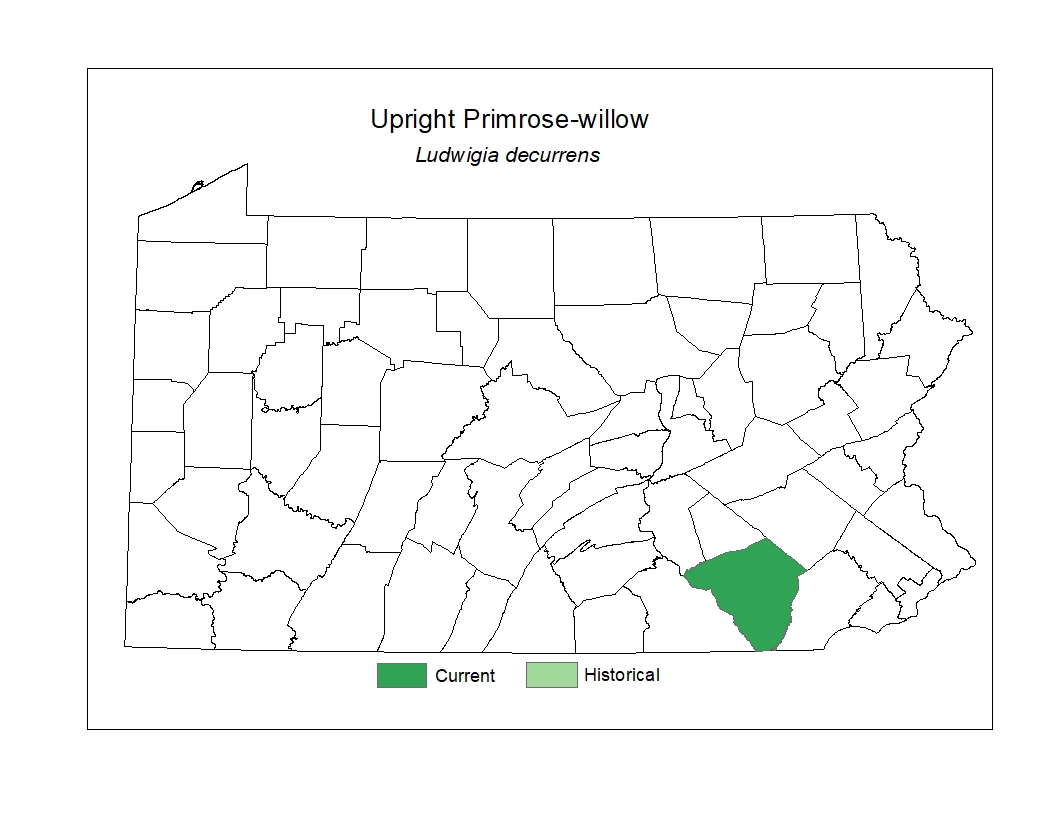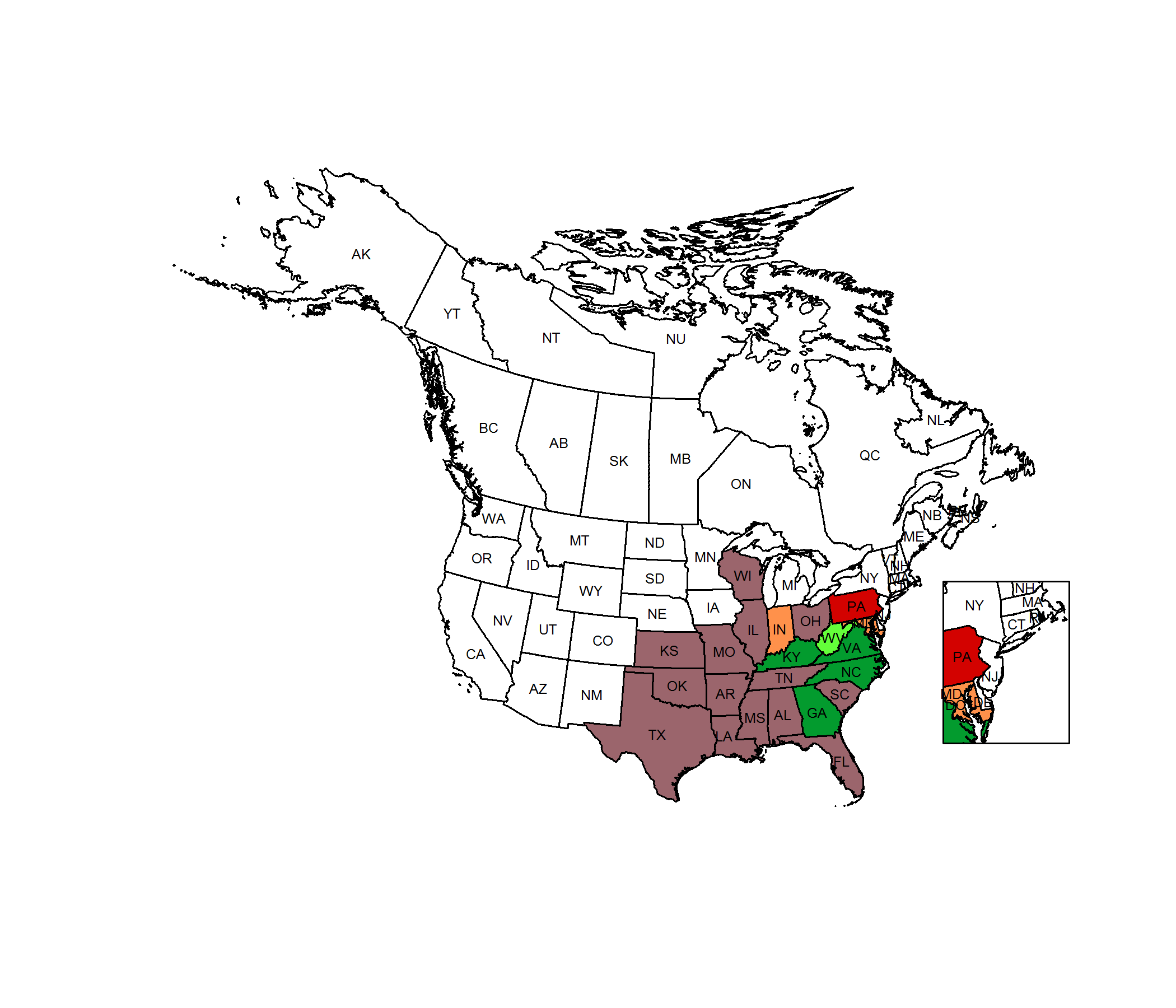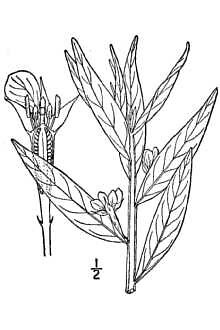 Species Factsheets
Species Factsheets
Ludwigia decurrens
Upright Primrose-willow
State Status: Pennsylvania Endangered (PE)
PBS Status: Pennsylvania Endangered (PE)
Federal Status:
Global Rank: G5
![]() rank interpretation
rank interpretation
State Rank: S1
Did You Know?
The more woody species of promroses are great browse for deer, goats sheep and cattle, so this species is rarely found in overgrazed pastures.
Description
Upright primrose-willow (Ludwigia decurrens) is an annual herb with hairless, square stems that may grow up to 2m tall. The leaves are alternately arranged, lance-shaped or linear, and the margins are untoothed. The leaf bases extend downward along the stem and create a raised line or “wing.” The flowers, appearing from July to September, are about 2.5cm in width and have four yellow petals and eight stamens. The fruit is a many-seeded capsule that is more-or-less four-sided. Despite its common name, the plant is not a true willow but a member of the evening-primrose family.
Rank Justification
Critically imperiled in the nation or state because of extreme rarity (often 5 or fewer occurrences) or because of some factor(s) such as very steep declines making it especially vulnerable to extirpation from the state.
PABS
The PA Biological Survey (PABS) considers upright primrose-willow to be a species of special concern, based on the single occurrence that has been confirmed, its very small state range, and its wetland habitat. It has a PA legal rarity status and a PABS suggested rarity status of Endangered. At present, it is only known from Lancaster County.
Habitat
it inhabits shoreline areas of the Susquehanna River.
Survey Dates
Flowers July - September
Distribution
In Pennsylvania, it reaches the known northern limit of its range and has been found only in Lancaster County

Threats
Invasive species represent a threat to its habitat.
Management
Upright primrose-willow is a southerly species that appears to be expanding its range to the north. It was first documented in Pennsylvania in 1987 and may become more frequent in the state in the future. The viability of the single known occurrence can be enhanced by maintaining the natural seasonal fluctuations in the water levels and the natural condition of the shoreline and islands of the Susquehanna River.
Conservation Status Map

NatureServe. 2017. NatureServe Explorer: An online encyclopedia of life [web application]. Version 7.1. NatureServe, Arlington, Virginia. Available https://explorer.natureserve.org.
https://plants.usda.gov/plantguide/pdf/pg_lude4.pdf
- NatureServe. 2018. NatureServe Explorer: An online encyclopedia of life [web application]. Version 7.1. NatureServe, Arlington, Virginia. Available at https://www.natureserve.org/explorer
- Pennsylvania Natural Heritage Program. 2018.
- Rhoads, A.F. and W.M. Klein, Jr. 1993. The Vascular Flora of Pennsylvania. American Philosophical Society, Philadelphia, Pennsylvania. Rhoads, A.F. and T.A. Block.
- 2007. The Plants of Pennsylvania: An Illustrated Manual. 2nd edition. University of Pennsylvania Press, Philadelphia, Pennsylvania.







